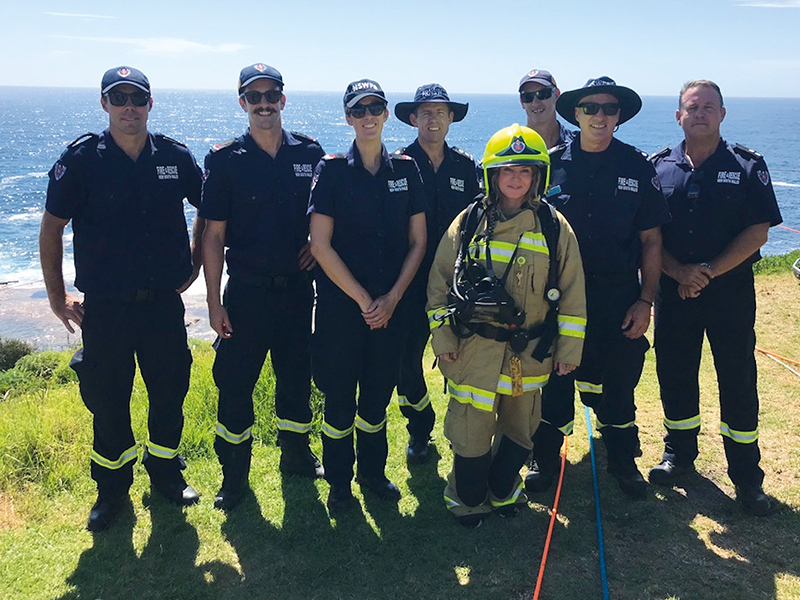A day in the life of Fire and Rescue NSW

In the last financial year,the 15 Fire and Rescue NSW(FRNSW) stations that make up the Metro East 2 zone – including Avalon, Mona Vale, Narrabeen, Dee Why, Forestville, Manly and the lower North Shore – responded to almost 18,000 incidents.
These included 1583 fire responses and 15,946 other incidents including Rescue and Hazardous Materials (Hazmat) and community engagements.
On the Northern Beaches, Narrabeen is a dedicated rescue station and only one of three stations in Sydney registered in vertical rescues, such as responding to calls for trapped paragliders, falls and suicide attempts, while Forestville is a hazardous material station.
Manly is a ladder platform station, while Dee Why is one of the busiest stations, attending 1298 total responses in the last financial year.
The stations work closely together and most of them on the peninsula house four platoons – A, B, C and D – each with a crew of between four and six firefighters working 24-hour shifts.
Peninsula Living joined Dee Why’s C Platoon – Donna Holliday, Mark Robb, James Colville and station officer Steve Reid – for a shift.
“You can’t pick an average day when it comes to being in the fire service,” reveals Donna.
“The unknown is in the job. You can get into the station first thing in the morning and boom, you could be straight into a serious house fire, bush fire, a motor vehicle accident, or a rescue incident.
“It keeps you on your toes.”
The days of calling the fire brigade to rescue a cat stuck up a tree are cliched, but still happen occasionally. “They’ll generally come down if you put food at the bottom of a tree and call their name,” laughs James Colville.
“They’re not silly!”
Nowadays, as well as keeping local residents safe, our firefighters are more likely to be called in for humanitarian relief, such as the floods in Queensland, or for overseas deployment such as the recent forest fires in Canada and California, and tsunamis and earthquakes in Indonesia, New Zealand and Japan.
“Our job is a lot more than just attending fires,”reveals Zone Commander,Superintendent Kel McNamara. “We have a big capability to go in and assess the damage.
We call them RDAs – rapid damage assessments – and can test for all the hazardous materials like gases and sewage.
“We work with the authorities to fix it up and can send hazardous materials crews, rescue crews, and drones in, to make everything safe.”
Shifts can be arduous so keeping fit is important, especially as the standard fire kit and equipment weighs around 25 kilos – and up to 38 kilos when carrying a ‘quick attack’ bag.
“When attending a house or building fire, they can wear the outfit for about 30 minutes,” explains Inspector Ron James. “But an older or larger firefighter might use up more air, which can knock it down to about 15 minutes.
“We don’t want them in that hostile environment for too long; it's a case of getting them in, searching for people and pets, knocking the fire down, and getting out. Then you get them out to rehydrate, and rotate the crew.
“If they need to go in again, they'll put a new tank on, but two lots of air is plenty, otherwise we'd just be exhausting our firefighters.”
Sometimes with building and house fires can be so full of thick black smoke, the crews can’t see their hands in front of their faces.
“House fires are always upsetting,” he adds. “The first thing we ask is if anyone or their pets are inside, but the worst jobs are when kids are involved. That hurts.
“The first eight minutes of smoke inhalation is critical, which is why working smoke alarms are so important, and save a lot of lives and properties.”
Firefighters work 48 hours a week, starting their 24 hours shift at 8am, with a shift pattern of 24 hours on, 24 off, 24 on, and then five days off.
The annual salary starts at around $70,000 per annum, and inflates as their rank climbs, but competition is huge, with more than 7000 people applying each year for around 100 jobs. Those chosen are trained to become a qualified firefighter at the new state-of-the-art FRNSW Emergency Services Academy located at Orchard Hills in western Sydney.
“It’s not unusual to apply four or five times before getting through,” explains Steve Reid, who has just retired after 43 years of service.
“But serving the community, especially your local community, is incredible and worth it.”
Fast facts
In the last financial year, the Metro East 2 zone had:
-17,529 Total Responses
-15,946 Other Responses (Rescue, Hazmat and other incidents)
-6724 Community Engagement Action
-1583 Fire Responses
For more information or to apply to be a firefighter, visit fire.nsw.gov.au.







